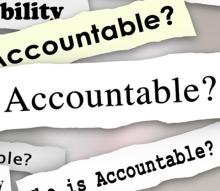Post Written by: Sara Hunter, OITE Wellness Advisor
When our room is where we sleep, eat, and work it’s hard to differentiate between the start and end of a workday. Leaving our laptop open to get that one last task done as we start dinner becomes a bit more tempting. Sending that final e-mail as we crawl into bed becomes a new norm. And we do this without realizing that other parts of our lives and relationships may be suffering as a result. We rationalize these seemingly small behaviors because we fool ourselves into thinking that increased access to work equates to increased productivity. And that may be true for some, but only to a certain point. We are not wired – mentally, emotionally, or physically – to always be on. It’s like driving a car without stopping for gas. You’ll eventually run out of the fuel it takes to keep going. This is the essence of burnout – going and going with no planned breaks or shifts in behaviors. And one way to guard against this all-too-common ailment is to create purposeful transitions in our day.
Are there clear indicators to the start and end of your day? How do you let your system know that one role you play in life is ending and another is beginning? Are there clearly spelled out boundaries to when to respond to your phone and e-mails so you don’t have to make those decisions in the moment?
If you answered no to any of these questions, you’re not alone. Most of us move through our day, letting unconscious habits lead the way. So even in the times you do happen to close your laptop or put away your phone for dinner, your head is still at work. Or maybe you know the frustration of going to bed at a decent hour but still struggling to fall asleep because you never quite left that project or task you were working on all day. We’ve all been guilty of this – letting one part of our day spill into another, leading us to feel distracted. Overtime, we feel exhausted.
Transitions don’t have to be big and they don’t have to take up a lot of time. They are simple demarcations in your day that are planned and purposeful. They may look something like:
- Taking three deep breaths before getting out bed to start the day or right after you close your laptop to signal the end of the workday
- Engaging in a reflection exercise after the
workday is done:
- What did I learn today that was useful? What was difficult and how did I get through it?
- What may I need to feel better prepared to face that challenge more effectively tomorrow?
- How do I want to show up as a partner, parent, friend, roommate, dog-mom when I get home today?
- Shaking limbs or dancing (yes, dancing)!
- Recreate a commute (even when working from home) by going for a walk at the start/end of the day
- Setting an intention for the role you’re stepping into next (ex: I want to be a present parent; I want to be an efficient worker, I want to be a compassionate friend). This creates behavioral anchors for when we feel stressed or overwhelmed.
- Putting your phone and laptop in a separate room once you’ve finished
- Changing clothes or taking a shower or bath
- Playing your favorite song
There is no one right way to mark your transitions. It’s about using what works for you and then making that a deliberate part of your day. Burnout will lessen and your ability to be more productive and engaged in the various roles you play in your life will increase. Give it a try.




